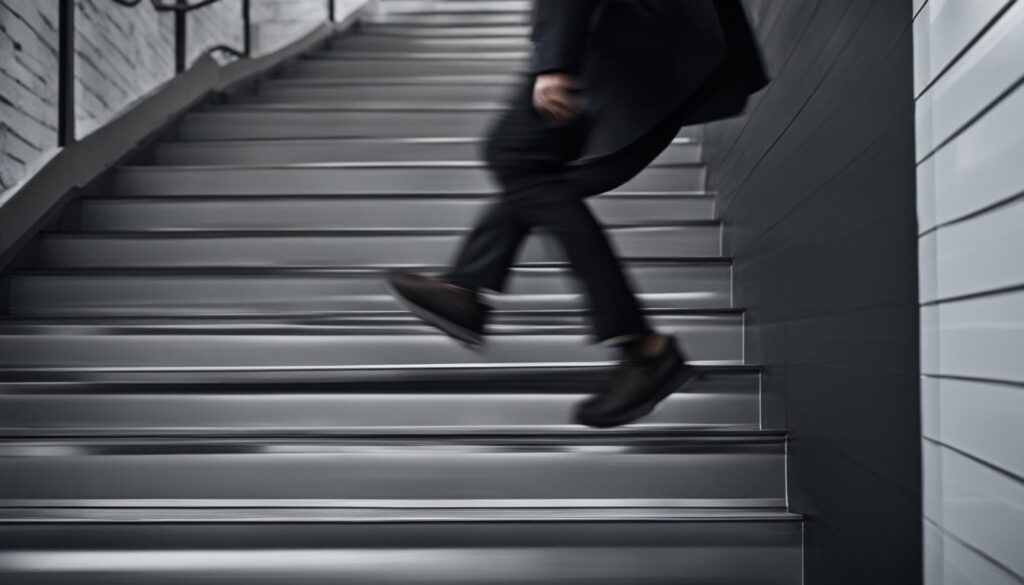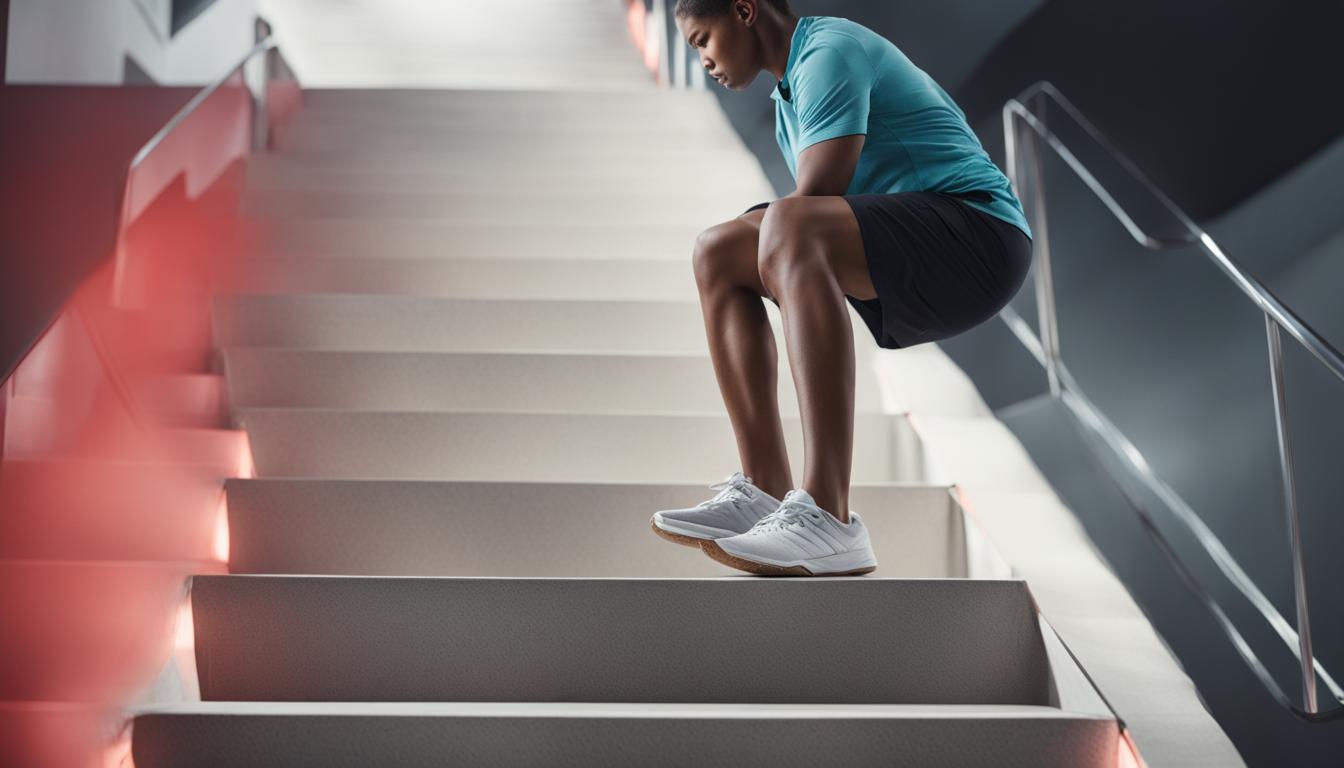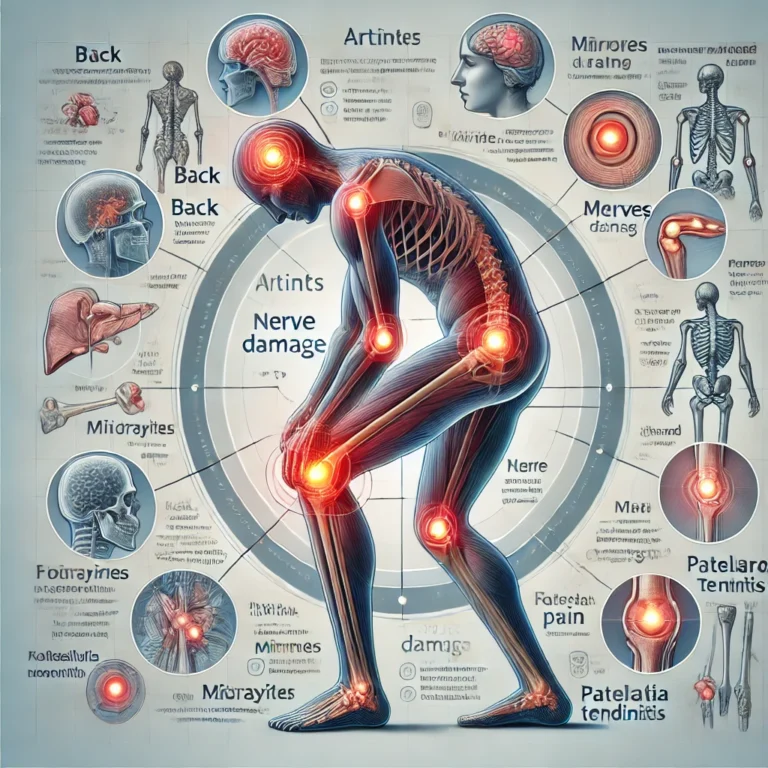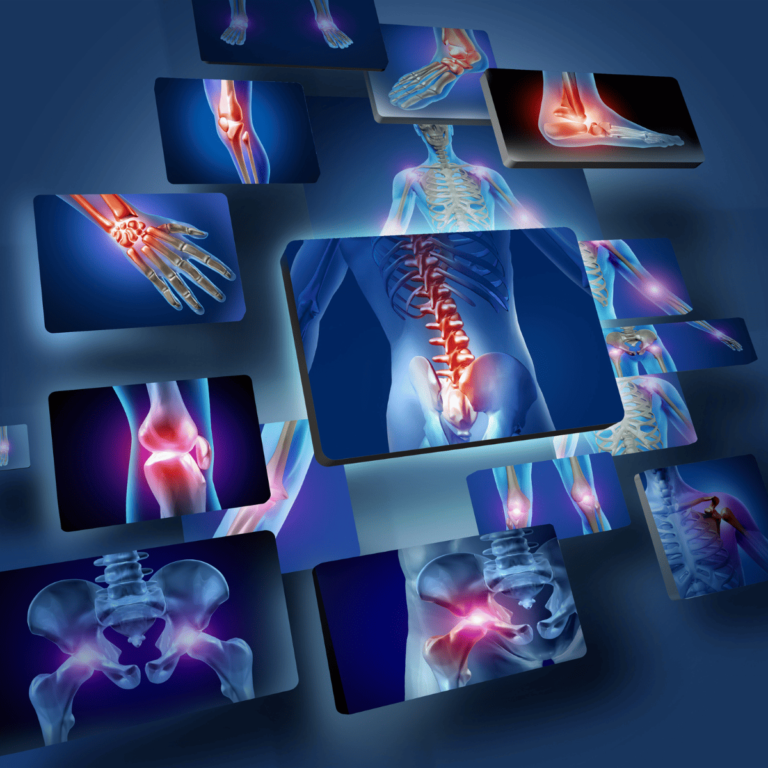Knee Pain Descending Stairs: Causes & Relief
Are you experiencing knee pain when descending stairs? You’re not alone. Many individuals struggle with knee discomfort while going down stairs, which can significantly impact their daily activities. In this article, we will explore the causes of knee pain when descending stairs and provide strategies for finding relief.
There are various factors that can contribute to knee pain when going down stairs. It could be due to issues with bone, ligaments, meniscal tissue, nerve tissue, tendons, or muscles. The pressure on the knee joint and tendon increases while walking downstairs, aggravating any existing irritation and causing worsened symptoms, such as in osteoarthritis or tendonitis. Strengthening the muscles around the knee joint is vital for addressing muscle imbalances and providing support. Stretching, taping, and bracing might also be part of an individualized treatment plan. To ensure an accurate diagnosis and effective relief, it’s advisable to consult with a physical therapist.
Key Takeaways:
- Many different factors can contribute to knee pain when going down stairs, including issues with bone, ligaments, meniscal tissue, nerve tissue, tendons, or muscles.
- Walking downstairs puts increased pressure on the knee joint and tendon, worsening symptoms in conditions such as osteoarthritis or tendonitis.
- Strengthening the muscles surrounding the knee joint is essential for addressing muscle imbalances and providing support.
- Consulting with a physical therapist can help diagnose the issue accurately and create an effective personalized treatment plan for relief.
- Incorporating strategies such as stretching, taping, and bracing, along with exercises, can provide relief and improve mobility.
Common Causes of Knee Pain Descending Stairs
The most common cause of knee pain when descending stairs is runner’s knee or patellofemoral pain syndrome, which occurs due to a problem with the movement of the kneecap. This condition is often seen in athletes, particularly runners, but can also affect individuals who engage in activities that involve repetitive knee bending, such as jumping or squatting.
Another common cause of knee pain when going down stairs is chondromalacia patella, which refers to the damage or softening of the cartilage on the back of the kneecap. This can result from factors such as overuse, poor alignment of the knee joint, or muscle imbalances.
Knee osteoarthritis is another leading cause of knee pain when descending stairs. This condition involves the degeneration of the knee bones and cartilage, leading to pain, stiffness, and reduced mobility. Individuals with knee osteoarthritis may experience worsening symptoms when navigating stairs due to the increased pressure placed on the knee joint.
Pes anserine bursitis is characterized by inflammation of the bursa located near the pes anserine tendons, which connect the muscles at the inner side of the knee. This condition commonly affects individuals involved in activities that require repetitive knee movements, such as running or cycling.
Muscle strains can also contribute to knee pain when going down stairs. These strains can occur in the muscles surrounding the knee joint, such as the quadriceps or hamstring muscles, due to sudden or excessive stretching or contraction.
Ligament injuries in the knee, such as anterior cruciate ligament (ACL) tears, can cause pain, instability, and difficulty descending stairs. Additionally, compensation injuries resulting from foot or ankle issues, such as plantar fasciitis or ankle sprains, can indirectly lead to knee pain when navigating stairs.
“When descending stairs, the force on the kneecap is approximately 3.5 times a person’s body weight.”
If you are experiencing knee pain when descending stairs, it is important to consult with a healthcare professional for an accurate diagnosis and appropriate treatment plan. Understanding the underlying cause of your knee pain is crucial for implementing targeted interventions and finding relief.

Signs and Symptoms of Knee Pain
- Pain or discomfort in the knee joint when going down stairs
- Swelling or inflammation around the knee
- Stiffness or limited range of motion in the knee
- Difficulty bearing weight on the affected leg
- Clicking or popping sensations in the knee
It is important to pay attention to these signs and symptoms and seek medical advice if you experience persistent or worsening knee pain.
Forces Through The Knee Cap When Descending Stairs
When descending stairs, the force on the kneecap is approximately 3.5 times a person’s body weight. This means that the knees bear a significant amount of weight when going down stairs, which can cause pain and discomfort. For comparison, walking exerts a force of 0.5 times body weight, highlighting why descending stairs can be more challenging and painful for individuals experiencing knee pain.
Strategies for Managing Knee Pain Descending Stairs
When it comes to managing knee pain when descending stairs, there are several strategies that can provide relief and improve mobility. Here are some effective approaches to consider:
- Step onto the stairs with your entire foot: Instead of just placing your toes on the edge of each step, try to distribute your weight evenly by stepping onto the stairs with your entire foot. This can help reduce the load on your knee joint and minimize pain.
- Push off from the outer heel: When climbing stairs, focus on pushing off from the outer heel of your foot rather than relying solely on your toes. This encourages proper alignment of the knee over the foot, reducing strain and discomfort.
- Address underlying causes: To effectively manage knee pain, it’s important to address the underlying causes. Consider incorporating exercises that strengthen the muscles surrounding the knee joint, as this can help correct muscle imbalances and provide greater support. Physical therapy may also be beneficial in creating a personalized treatment plan.
- Utilize supportive aids: Supportive aids such as braces or taping techniques can provide additional stability and relieve pressure on the knee. Discuss with your healthcare professional to determine if these options are suitable for you.
RICE (Rest, Ice, Compression, Elevation) can also play a role in managing knee pain when descending stairs. Resting the affected knee, applying ice to reduce inflammation, utilizing compression techniques, and elevating the leg can help alleviate pain and swelling in the short term.
For individuals seeking further relief, over-the-counter medication and weight management can be beneficial. Additionally, biomechanical devices like AposHealth can provide targeted support and improve mobility.
By implementing these strategies and seeking appropriate treatment, individuals experiencing knee pain when going down stairs can find relief and regain their ability to navigate stairs with greater comfort.
Conclusion
Knee pain when descending stairs is a common problem that can significantly impact daily activities. The discomfort can make it challenging to navigate stairs, limiting mobility and causing frustration. However, there are effective strategies for finding relief and managing knee pain.
Understanding the causes of knee pain when going down stairs is crucial in developing a personalized treatment plan. Depending on the underlying issue, different approaches may be recommended, such as exercises, physical therapy, or supportive aids. Consulting with a healthcare professional is essential for proper diagnosis and guidance on the most suitable treatment options.
By implementing the right strategies and receiving appropriate care, individuals can reduce knee pain and improve their quality of life. Whether it’s strengthening the surrounding muscles, using supportive aids, or practicing proper alignment, there are various solutions available. Taking steps towards knee pain relief and management can help individuals regain confidence and enjoy their daily activities without the discomfort of descending stairs.
FAQ
What are the common causes of knee pain when descending stairs?
The most common causes of knee pain when descending stairs include runner’s knee or patellofemoral pain syndrome, chondromalacia patella, knee osteoarthritis, pes anserine bursitis, muscle strains, ligament injuries, and compensation injuries from foot or ankle issues.
Why does knee pain occur when going down stairs?
When going down stairs, the force on the kneecap is approximately 3.5 times a person’s body weight, which puts significant pressure on the knees and can cause pain and discomfort.
How can I manage knee pain when descending stairs?
Strategies for managing knee pain when descending stairs include stepping onto the stairs with the whole foot, pushing off from the outer heel, ensuring proper alignment of the knee over the foot, and addressing underlying causes with exercises, physical therapy, supportive aids, and RICE (Rest, Ice, Compression, Elevation).
What can I do to find relief from knee pain when descending stairs?
Finding relief from knee pain when descending stairs may involve over-the-counter medication, weight management, biomechanical devices like AposHealth, and consulting with a healthcare professional for diagnosis and a personalized treatment plan.
How can I improve my quality of life if I experience knee pain when going down stairs?
By understanding the causes of knee pain and implementing effective strategies for relief, individuals can navigate stairs with greater ease and reduce discomfort, ultimately improving their quality of life.






